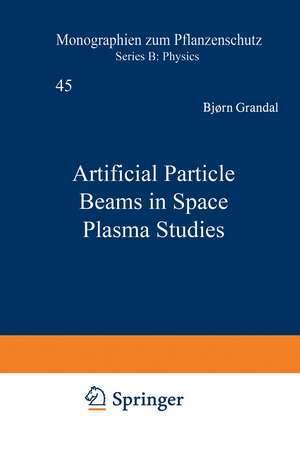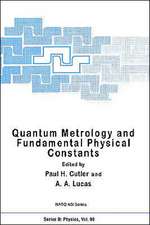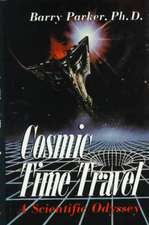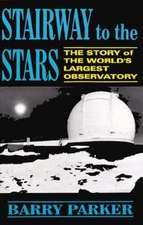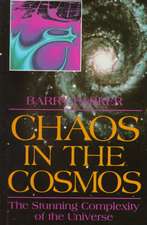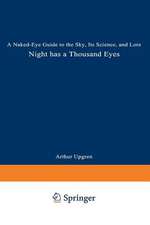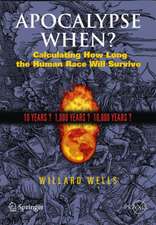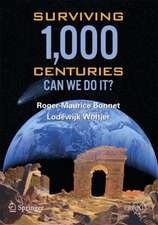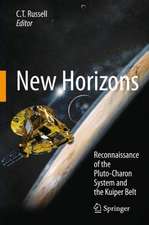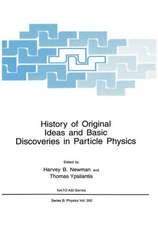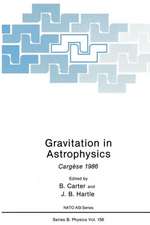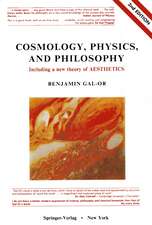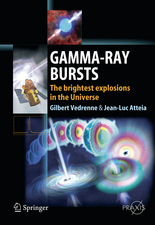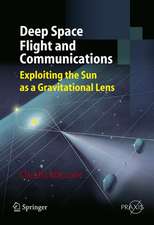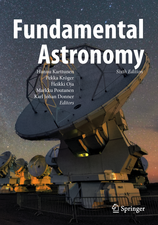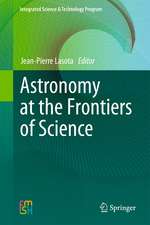Artificial Particle Beams in Space Plasma Studies: NATO Science Series B:, cartea 79
Autor Bjorn Grandal, A. Northen Limba Engleză Paperback – 14 mar 2013
Din seria NATO Science Series B:
- 5%
 Preț: 375.70 lei
Preț: 375.70 lei - 5%
 Preț: 369.29 lei
Preț: 369.29 lei - 5%
 Preț: 720.84 lei
Preț: 720.84 lei - 18%
 Preț: 1406.03 lei
Preț: 1406.03 lei - 5%
 Preț: 373.33 lei
Preț: 373.33 lei - 5%
 Preț: 723.78 lei
Preț: 723.78 lei -
 Preț: 391.79 lei
Preț: 391.79 lei - 5%
 Preț: 1445.00 lei
Preț: 1445.00 lei - 5%
 Preț: 380.61 lei
Preț: 380.61 lei - 5%
 Preț: 1103.75 lei
Preț: 1103.75 lei - 5%
 Preț: 711.72 lei
Preț: 711.72 lei - 5%
 Preț: 1414.08 lei
Preț: 1414.08 lei - 18%
 Preț: 957.44 lei
Preț: 957.44 lei - 5%
 Preț: 723.21 lei
Preț: 723.21 lei - 5%
 Preț: 727.44 lei
Preț: 727.44 lei - 5%
 Preț: 1117.46 lei
Preț: 1117.46 lei - 5%
 Preț: 1429.80 lei
Preț: 1429.80 lei - 5%
 Preț: 366.56 lei
Preț: 366.56 lei - 5%
 Preț: 1116.21 lei
Preț: 1116.21 lei - 5%
 Preț: 1106.33 lei
Preț: 1106.33 lei - 5%
 Preț: 1107.77 lei
Preț: 1107.77 lei - 5%
 Preț: 1098.48 lei
Preț: 1098.48 lei - 5%
 Preț: 715.71 lei
Preț: 715.71 lei - 5%
 Preț: 1428.71 lei
Preț: 1428.71 lei - 5%
 Preț: 2004.54 lei
Preț: 2004.54 lei - 5%
 Preț: 724.70 lei
Preț: 724.70 lei - 5%
 Preț: 1438.38 lei
Preț: 1438.38 lei - 5%
 Preț: 1109.23 lei
Preț: 1109.23 lei - 5%
 Preț: 1414.64 lei
Preț: 1414.64 lei - 5%
 Preț: 1291.01 lei
Preț: 1291.01 lei - 5%
 Preț: 1029.50 lei
Preț: 1029.50 lei - 5%
 Preț: 388.12 lei
Preț: 388.12 lei - 5%
 Preț: 1104.48 lei
Preț: 1104.48 lei -
 Preț: 383.93 lei
Preț: 383.93 lei - 5%
 Preț: 718.46 lei
Preț: 718.46 lei - 5%
 Preț: 1113.63 lei
Preț: 1113.63 lei - 5%
 Preț: 369.45 lei
Preț: 369.45 lei - 5%
 Preț: 1108.72 lei
Preț: 1108.72 lei - 5%
 Preț: 1107.77 lei
Preț: 1107.77 lei - 5%
 Preț: 1297.99 lei
Preț: 1297.99 lei - 5%
 Preț: 1123.87 lei
Preț: 1123.87 lei - 5%
 Preț: 718.65 lei
Preț: 718.65 lei - 5%
 Preț: 1954.62 lei
Preț: 1954.62 lei - 5%
 Preț: 721.40 lei
Preț: 721.40 lei
Preț: 422.80 lei
Nou
Puncte Express: 634
Preț estimativ în valută:
80.91€ • 83.59$ • 67.34£
80.91€ • 83.59$ • 67.34£
Carte tipărită la comandă
Livrare economică 25 martie-08 aprilie
Preluare comenzi: 021 569.72.76
Specificații
ISBN-13: 9781468442250
ISBN-10: 1468442252
Pagini: 724
Ilustrații: XVIII, 704 p. 176 illus.
Dimensiuni: 178 x 254 x 38 mm
Greutate: 1.23 kg
Ediția:Softcover reprint of the original 1st ed. 1982
Editura: Springer Us
Colecția Springer
Seria NATO Science Series B:
Locul publicării:New York, NY, United States
ISBN-10: 1468442252
Pagini: 724
Ilustrații: XVIII, 704 p. 176 illus.
Dimensiuni: 178 x 254 x 38 mm
Greutate: 1.23 kg
Ediția:Softcover reprint of the original 1st ed. 1982
Editura: Springer Us
Colecția Springer
Seria NATO Science Series B:
Locul publicării:New York, NY, United States
Public țintă
ResearchCuprins
1: Accelerator Experiments in Space.- The Use of Artificial Electron Beams as Probes of the Distant Magnetosphere.- Recent Observations of Beam Plasma Interactions in the Ionosphere and a Comparison with Laboratory Studies of the Beam Plasma Discharge.- Charged Particle Measurements from a Rocket-borne Electron Accelerator Experiment.- On the Use of Artificially Injected Energetic Electrons as Indicators of Magnetospheric Electric Fields Parallel to the Magnetic Lines of Force.- The French-Soviet Experiments ARAKS: Main Results.- Wave Excitation in Electron Beam Experiment on Japanese Satellite “JIKIKEN (EXOS-B)”.- Plasma Waves and Electrical Discharges Stimulated by Beam Operations on a High Altitude Satellite.- Plasma Diagnostics by Electron Guns and Electric Field Probes on ISEE-1.- Stimulation of Plasma Waves by Electron Guns on the ISEE-1 Satellite.- Evidence for Beam-Stimulated Precipitation of High Energy Electrons.- Highlights of the Observations in the POLAR 5 Electron Accelerator Rocket Experiment.- Observations of Plasma Heating Effects in the Ionosphere by a Rocket-borne Electron Accelerator.- Plasma Waves Produced by the Xenon Ion Beam Experiment on the Porcupine Sounding Rocket.- The EXCEDE SPECTRAL Artificial Auroral Experiment: An Overview.- Onboard Radiometric Photography of EXCEDE SPECTRAL’s Ejected Electron Beam.- General Discussion on Accelerator Experiments in Space.- 2: Natural Beam Plasma Interactions in Space.- Observations of Non-linear Processes in the Ionosphere.- Interaction between Natural Particle Beams and Space Plasmas.- 3: Accelerator Experiments in the Laboratory.- Laboratory Simulation of Injection of Particle Beams in the Ionosphere.- The NASA Space Environment Simulation Laboratory.- Visible Signatures of the Multi-stepTransition to a Beam-Plasma-Discharge.- Electron Energy Distribution Produced by Beam-Plasma-Discharge.- Time-dependent Plasma Behavior Trigged by a Pulsed Electron Gun under Conditions of Beam-Plasma-Discharge.- Ignition of the Beam-Plasma-Discharge and its Dependence on Electron Density.- Plasma Waves Stimulated by Electron Beams in the Lab and in the Auroral Ionosphere.- Studies of Beam-Plasma Interactions in a Space Simulation Chamber Using Prototype Space-Shuttle Instruments.- Transient Effects in Beam-Plasma Interactions in a Space Simulation Chamber Stimulated by a Fast Pulse Electron Gun.- Description of the Plasma Diagnostics Package (PDP) for the OSS-1 Shuttle Mission and JSC Plasma Chamber Test in Conjunction with the Fast Pulse Electron Gun (FPEG).- Radial Dependence of HF Wave Field Strength in the BPD Column.- Laboratory Beam-Plasma Interactions — Linear and Nonlinear.- Electromagnetic Radiation from Beam-Plasma Instabilities.- Electron Beam Injection and Associated Phenomena as Observed in a Large Space Simulation Chamber.- General Discussion on Accelerator Experiments in the Laboratory.- 4: Theoretical Aspects of The Beam Plasma Interactions.- Theory of Beam Plasma Discharge.- Electron Beam as a Source of Electrostatic Waves.- Spontaneous Emission of a Charged Particle Beam Inside a Plasma: Coherent and Incoherent Aspects.- The Beam-Plasma Discharge under Space-like Conditions.- Plasma Waves Generated by Rippled, Magnetically Focused Electron Beams Surrounded by Tenuous Plasmas.- 5: Neutralization of a Charged Body in Space.- Charge Neutralization as Studied Experimentally and Theoretically.- Experimental Studies of the Neutralization of a Charged Vehicle in Space and in the Laboratory in Japan.- Electric Field Observations of Time Constants Relatedto Charging and Charge Neutralization Processes in the Ionosphere.- Measurements of Vehicle Potential Using a Mother-Daughter Tethered Rocket.- General Discussion on Neutralization of a Charged Body in Space.- 6: Future Plans.- Space Experiments with Particle Accelerators (SEPAC).- The Norwegian Program Using Particle Accelerators in Space.- The Artificially Injected Charged Particles as a Tool for the Measurement of the Electric Field in the Magnetosphere.- General Discussion on Future Experiments.- Participants.
